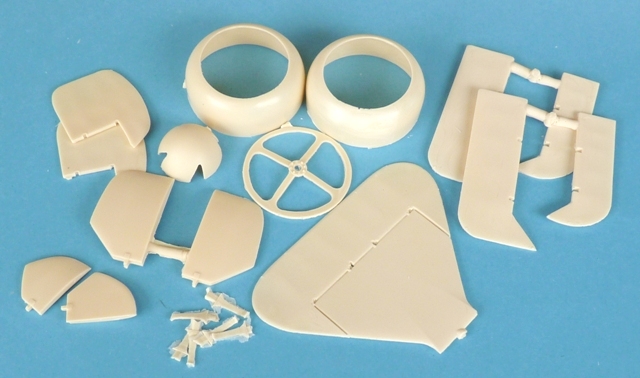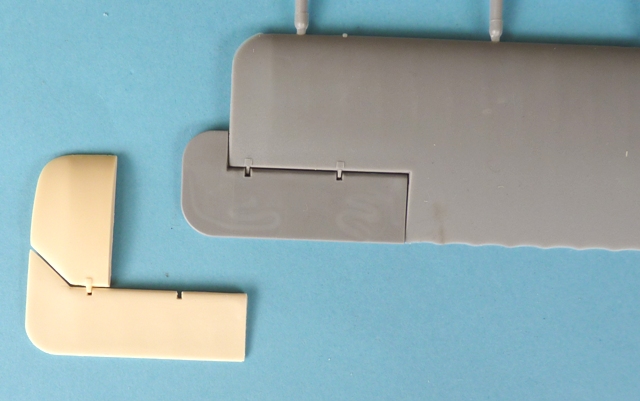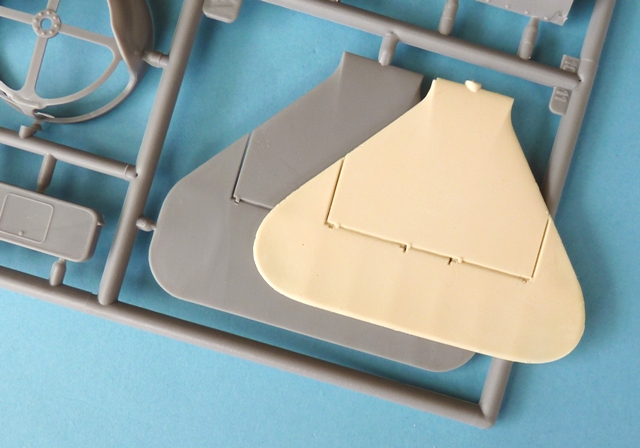|
Reviewed by Rob Baumgartner

HyperScale is proudly supported by
Squadron.com
The Siemens-Schuckert D.III has a soft spot in many modellers’ hearts.
It wasn’t produced in large numbers and only saw limited frontline service. This is despite the fact that it was one of the fastest climbing fighters of its time and possessed good manoeuvrability.
Its spectacular performance was due to the 160hp Siemens-Halske Sh.III rotary engine. Unfortunately castor oil of the wrong viscosity was used, thanks to incorrectly labelled barrels. That led to seized and disintegrating pistons which saw the fighters being returned to the factory for engine replacement. The opportunity was also taken to make airframe modifications.
A number of methods were tried to provide additional cooling and these resulted in various cowling and spinner modifications. Flying surfaces were not exempt and these also came up for scrutiny.
To help replicate these changes on Roden’s kit of the D.III, Loon Models have produced a couple of conversion sets. To cater for these alterations, they supply a variety of parts for the enthusiast to mix and match and these will allow the modeller to replicate almost any machine found in period photographs.
LO32006, 1/32 Siemens-Schuckert D.III early conversion & details (Roden)
This set contains 20 pieces of buff coloured resin. All of the parts were well cast with no distortion or troublesome flaws. A few very minor air bubbles were sighted but these can easily be eliminated without losing any of the subtle detail.

Amongst this group of goodies are two full 360 degree cowlings. Images suggest that some of the earliest versions had slots cut into the lower portions but it’s not exactly clear what shape they were. To allow the modeller to make a mistake while replicating this feature, the manufacturer thoughtfully supplies 2 examples.

The initial aircraft had ailerons substantially different from the later types presented in the donor kit. They didn’t have the balances extending beyond the span of the wing tips so to cater for these types Loon Models provide new extremities and ailerons. The former replaces the last couple of rib positions and a modeller with only a modicum of experience should be able to splice this into position seamlessly.

The tail section is another area that changed over time. Consequently we get the more curved rudder with the smaller balance and revised shape, as well as elevators sporting a much smaller surface area than that of its successor.

Loon Models haven’t forgotten the spinner and this is of the type that had yet to have the cooling slots cut into it. A separate cowling brace is thoughtfully provided and this stops you butchering Roden’s example if you were to extricate it from its plastic moulding.
LO32007, 1/32 Siemens-Schuckert D.III late conversion & details (Roden)
This is a more modest set of parts as the conversion deals with the later examples of the SSW D.III.
These are the ones that came away from the factory with the new ailerons but some still displayed characteristics of the earlier machines.
Thus we still get the unvented spinner, and the rounded smaller area elevator still comes into play. As before, the manufacturers have cast this part attached to the horizontal tail, which matches that of its plastic equivalent. This greatly eases assembly and simply slots into the assembled fuselage.

If you want to animate these surfaces then it’s not hard to cut and combine the resin elevator with plastic horizontal tail.
Two new cowlings are supplied with one being the same as the donor kit’s plastic example...sans bracing. The second item features a squared-off lower edge cut-out which will be useful to those wanting to replicate one of the unique machines that wore them.
Once again we are provided with engine supports and an informative instruction sheet explains the basic steps to complete the modifications.
These conversion sets offer an opportunity to build an example of the SSW D.III that can’t be built straight out of the box.
Each new item is modelled off one of the kit parts and as such, does not interfere with the integrity of Roden’s original boxing. This does mean that any inherent fit problems with the donor kit will be reflected in the conversion and Loon Models makes us fully aware of any potential problem areas.
As the parts are essentially one-for-one replacements for the plastic items, separate diagrammed instructions are not necessary. All one needs is a photo of the particular machine they want to replicate and then these conversion sets will do the rest.
Thanks to Roll Models for
the review sample
Loon Models products are available online from Roll Models
Review Text and Images Copyright © 2010 by Rob Baumgartner
Page Created 11 October, 2010
Last updated
13 October, 2010
Back to HyperScale
Main Page
Back to Reviews
Page

|
